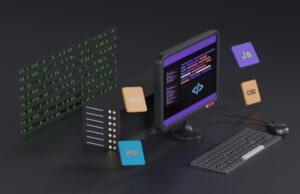Proponents of decentralized finance have long argued that the technology is necessary to enable the widespread adoption of cryptocurrencies. But, as we all know, it’s not enough just to develop an application that makes use of a new token—to actually be useful, you need other applications to accept it. This problem has been recognized within the Ethereum community for some time now, but progress on solutions has been slow due to disagreements about how best to solve them. Luckily for those working on decentralized finance projects like Token Bridge Network (TBN), there are now several viable options available for bridging blockchains together and creating networks with which users can interact with each other without needing permission from anyone else first.
Token Bridges
Token bridges are a way to connect two blockchains, allowing for the transfer of tokens between them. They’re similar in concept to atomic swaps but operate at a higher level: instead of requiring users to manually exchange their coins, they allow for automatic cross-chain transactions. The ERC20 to BEP20 bridge is an example of a token bridge that allows users who hold ERC20 tokens (such as those from projects built on Ethereum) to send these tokens over into the new Beepworld blockchain when it launches later this year. Once you’ve sent your ERC20s over into this new system, they will be converted into BEPS (the native currency).
This is useful because it allows users who want to take advantage of features offered only by one blockchain, for example, Ethereum’s smart contracts or Bitcoin’s privacy features, to do so without having to give up the benefits of another blockchain (ease-of-use). This also makes decentralized finance more accessible: if you want your company or product built on top of Ethereum but don’t know how yet? No problem! Just use our token bridge service instead!
Different Types Of Token Bridges
Token bridges can take a variety of forms. In this section, we’ll go over the most common types of token bridges, including sidechains, wrapped tokens and atomic swaps.
- Sidechains: A sidechain is a blockchain that runs parallel to another blockchain but does not have direct access to its parent chain’s native currency (e.g., Ethereum). Instead it uses its own native token, which serves as an intermediary between the two blockchains, to enable transactions between them without requiring users or developers to hold any ETH at all on their respective chains. The best example of this kind of bridge is 0x Protocol’s ZRX token which acts as an exchange medium between different ERC20 tokens running on top of Ethereum such as OmiseGo (OMG), Augur (REP) and Request Network ($REQ).
- Wrapped Tokens: These are similar in concept but differ slightly from side chains because they don’t create new currencies with their own networks; instead they use existing ones like BTC/LTC/ETH etc., while allowing users who don’t have those currencies available yet access through something called “wrapping services” provided by companies like ShapeShift or Changelly who offer conversion services between various cryptocurrencies through APIs before sending them back out again into whichever one you need once everything goes through successfully without any fees charged whatsoever!
Token bridges are an essential part of the decentralized finance ecosystem. They allow users to transfer tokens across blockchains, which is a key component of the tokenization of assets. Token bridges make it easier for users to exchange tokens in decentralized finance by enabling seamless cross-chain transactions without needing to perform complex technical operations or pay high fees at each step along the way.
The Future Of Token Bridges
Now that we’ve learned how token bridges work, let’s discuss their potential for the future.
The first area where we can see potential for improvement is in cross-chain communication. Currently, most token bridges rely on centralized services for this purpose, a practice that could be improved by rethinking how we communicate across blockchains and even between different networks altogether. The Allbridge Core protocol is an example of such an improvement: it uses state channels to enable instant transactions between any two blockchains or tokens without requiring them both to have native support for each other’s protocols! Another possibility is using Ethereum side chains as intermediaries between incompatible chains (like EOS and NEO), which would allow users who want access to certain features but don’t want their funds held hostage by one particular network operator.
Risks And Challenges Of Token Bridges
The risks and challenges associated with token bridges are numerous, but they can be mitigated with proper due diligence and research.
As mentioned above, security concerns are one of the biggest risks associated with token bridges. Because they’re still in their infancy, there’s no telling what kind of hacks will be attempted on them in the future and some may have been attempted already! While it might seem like a good idea to use a token bridge right now because it’s easy and convenient, doing so can put your money at risk if something goes wrong later down the line (or even worse).
Some people also worry about regulatory challenges related to using token bridges as opposed to centralized exchanges like Binance or Coinbase Pro where all trades happen on those companies’ servers rather than directly between users like at DEXs. This means that if regulators decide they want all cryptocurrency trading activity monitored closely by law enforcement agencies such as FinCEN (Financial Crimes Enforcement Network), then these exchanges could face fines for not complying with what regulators deem necessary despite being located overseas where such laws aren’t enforced yet.
In conclusion, token bridges are a crucial part of the decentralized finance ecosystem. They enable users to transfer value between different blockchains and tokens, which is essential for interoperability and growth in this space. We believe that all bridge projects should be open source so that anyone can build upon their codebase if they want to create their own bridge or improve upon existing ones.














